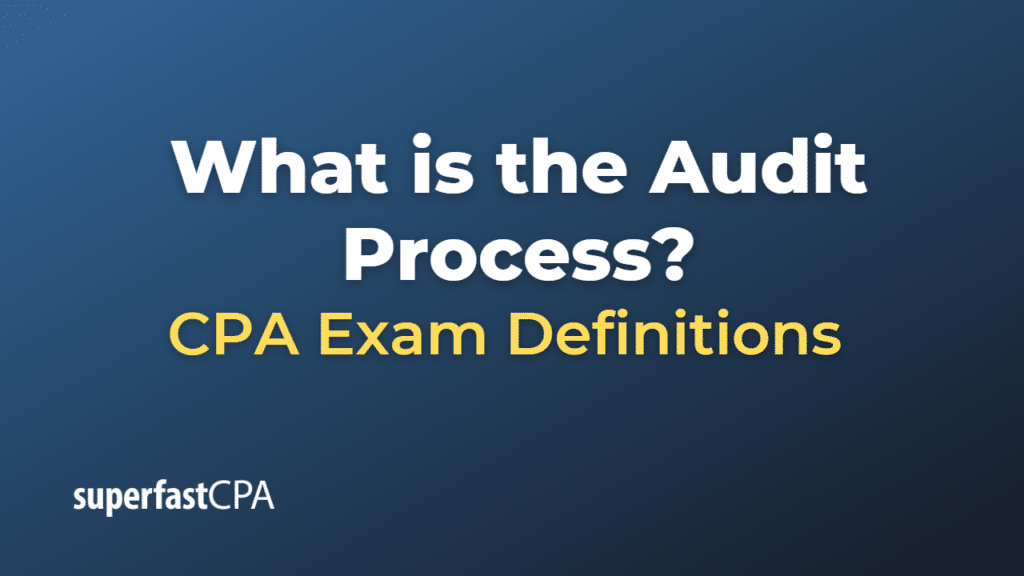Audit Process
The audit process is a series of steps and procedures that auditors follow to obtain reasonable assurance that a company’s financial statements are free from material misstatement and presented fairly in accordance with applicable accounting standards. The audit process typically includes the following stages:
- Client acceptance and continuance: Before starting an audit, the auditor evaluates whether to accept a new client or continue with an existing client, considering factors like the client’s integrity, the auditor’s ability to provide the required services, and any potential risks associated with the engagement.
- Planning: The auditor develops an audit plan, which includes understanding the client’s business, industry, and operating environment, assessing the risks of material misstatement, and determining the nature, timing, and extent of audit procedures.
- Risk assessment: The auditor identifies and assesses the risks of material misstatement in the financial statements, considering both inherent and control risks. This involves understanding the client’s internal controls, processes, and systems, as well as any external factors that may impact the financial statements.
- Test of controls: The auditor tests the effectiveness of the client’s internal controls to determine the extent to which they can rely on them. This may involve inquiries, observations, inspections, and reperformance of control procedures.
- Substantive procedures: The auditor performs substantive procedures, which are detailed tests of transactions, account balances, and disclosures to obtain audit evidence about the accuracy and completeness of the financial statements. Substantive procedures can include analytical procedures, tests of details, and confirmations.
- Audit evidence and documentation: The auditor gathers and documents sufficient and appropriate audit evidence to support their conclusions and audit opinion. This involves maintaining a well-organized audit file containing all relevant working papers and documentation.
- Review and supervision: The audit engagement is subject to ongoing review and supervision by senior audit team members to ensure the audit is conducted in accordance with auditing standards and the planned audit approach.
- Conclusion and audit opinion: Based on the audit evidence obtained, the auditor evaluates the overall financial statement presentation and forms an audit opinion. The opinion can be unqualified (clean), qualified, adverse, or a disclaimer of opinion, depending on the nature and materiality of any identified misstatements or limitations in the scope of the audit.
- Audit report: The auditor issues a written audit report, which includes their audit opinion, a description of the scope of the audit, and any other relevant information or disclosures.
- Post-audit activities: After issuing the audit report, the auditor may perform follow-up activities, such as discussing the audit findings with the client, providing recommendations for improvement, and conducting subsequent interim reviews or audit engagements.
Example of the Audit Process
Let’s consider a hypothetical example of an audit process for a small manufacturing company called XYZ Ltd.
- Client acceptance and continuance: ABC Auditing Firm assesses the potential risks and benefits of accepting XYZ Ltd as a new client. After evaluating the company’s management integrity, financial stability, and industry reputation, ABC Auditing Firm decides to accept the engagement.
- Planning: ABC Auditing Firm develops an audit plan that outlines the audit’s scope, objectives, and timeline. The plan includes understanding XYZ Ltd’s business operations, accounting policies, and industry-specific risks.
- Risk assessment: ABC Auditing Firm identifies potential risks of material misstatements in XYZ Ltd’s financial statements. This includes assessing the risk of fraud, inventory valuation, and revenue recognition.
- Test of controls: The auditors test the effectiveness of XYZ Ltd’s internal controls over financial reporting, such as controls over inventory management, sales invoicing, and cash disbursements.
- Substantive procedures: ABC Auditing Firm performs substantive procedures to verify the accuracy and completeness of XYZ Ltd’s financial statements. For example, they may perform a physical count of inventory, confirm accounts receivable balances with customers, and review sales transactions for proper revenue recognition.
- Audit evidence and documentation: The auditors gather and document sufficient audit evidence to support their conclusions. They organize and maintain a comprehensive audit file containing all relevant working papers and documentation.
- Review and supervision: Senior audit team members at ABC Auditing Firm review the audit work performed, ensuring compliance with auditing standards and the planned audit approach.
- Conclusion and audit opinion: Based on the audit evidence obtained, ABC Auditing Firm concludes that XYZ Ltd’s financial statements are fairly presented and free from material misstatement. The auditors form an unqualified (clean) audit opinion.
- Audit report: ABC Auditing Firm issues a written audit report for XYZ Ltd, stating their unqualified audit opinion and describing the scope of the audit.
- Post-audit activities: After the audit report is issued, ABC Auditing Firm discusses the audit findings with XYZ Ltd’s management and provides recommendations for improving internal controls and accounting processes. They also plan for any necessary interim reviews and the next annual audit engagement.













